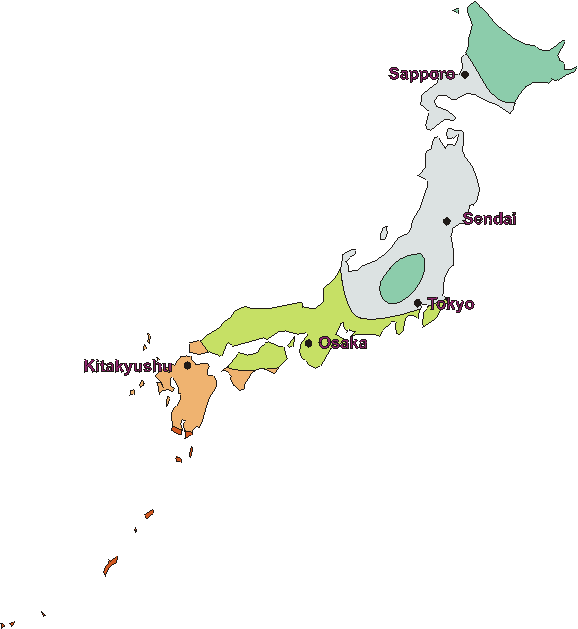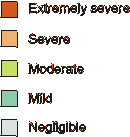
 |
This map of the corrosion severity observed in various regions of Japan shows an increasing corrosivity from North to South. It was adapted from "Q & A on Corrosion & Protection for metals- Corrosion police" edited by Fushoku, Boushoku, Gijutsu, and Kyoukai of the Japanese Society of Corrosion and Protection (Maruzen Co., 1988).


Controlling air pollution is a major issue on both the local and national levels in Japan. In recent years, the share of private cars as a proportion of total passenger transport in Japan has increased, leading to more cars on already-congested roads. Automobile traffic is a major cause of urban air pollution. The Japanese government has several environmental protection laws in effect relating to automobiles, including the Law Concerning Special Measures for Total Emission Reduction of Nitrogen Oxides from Automobiles (Automobile NOx Law), and the Air Pollution Control Law, aimed at solving congestion and pollution. The Air Pollution Control Law provides for stations in several parts of the country to monitor for nitrogen dioxide, suspended particulate matter (SPM), sulfur dioxide , carbon monoxide (CO) and photochemical oxidants (Ox).
In 1998, only photochemical oxidants exceeded the environmental quality standards set by the government, though nitrogen dioxide emissions remained severe in major urban areas. The Japanese Environment Agency continues its efforts to reduce urban air pollution by strengthening measures to cut emissions from factories and businesses, enforcing regulations for automobile exhaust gases, and promoting low-emission vehicles. However, an increase in diesel freight transport vehicles may have an adverse effect on air pollution control measures. In June 2001, Japan's legislature, the Diet enacted a law designed to further tighten controls on nitrogen dioxide and PM emissions from diesel powered vehicles in order to improve air quality in major urban areas. The law applies to a total of 196 city, ward, town and village governments in Tokyo, Saitama, Chiba, Kanagawa, Hyogo and Osaka. The Tokyo metropolitan assembly recently approved an ordinance banning diesel powered commercial vehicles from Tokyo streets if they exceed a limit on emissions of dangerous particles. The plan started in December 2000, and is scheduled to take full effect by October 2003.
In Japan, as in the other industrialized nations, air pollution from the transport sector continues to be an important challenge, despite substantial gains over the previous two decades. Japan has seen a tremendous increase its transport infrastructure since the 1970s, largely due to government encouragement, and this growth shows no signs of abating. There has also been a sharp rise in the number of vehicles in use (tripling from 1970-90) to take advantage of this improved infrastructure. For example, in the period 1970-90, passenger traffic doubled and freight traffic increased by 60 percent, and continues to increase by nearly three percent annually. Further, consumer preference for larger, more powerful vehicles has recently resulted in a decline in the fuel efficiency of passenger cars in use. Taken together, these phenomena have resulted in increases in NOx pollution (especially in urban areas), carbon dioxide and sulfur dioxide emissions resulting from transport also have increased.
Other regions and countries: Argentina, Brazil, Canada, Central America, Chile, China, Colombia, Cuba, France, Germany, India, Italy, Japan, Mexico, New Zealand, North America, Portugal, Russia, Saudi Arabia, South Africa, Spain, Sweden, UK, USA, Venezuela
 |  |